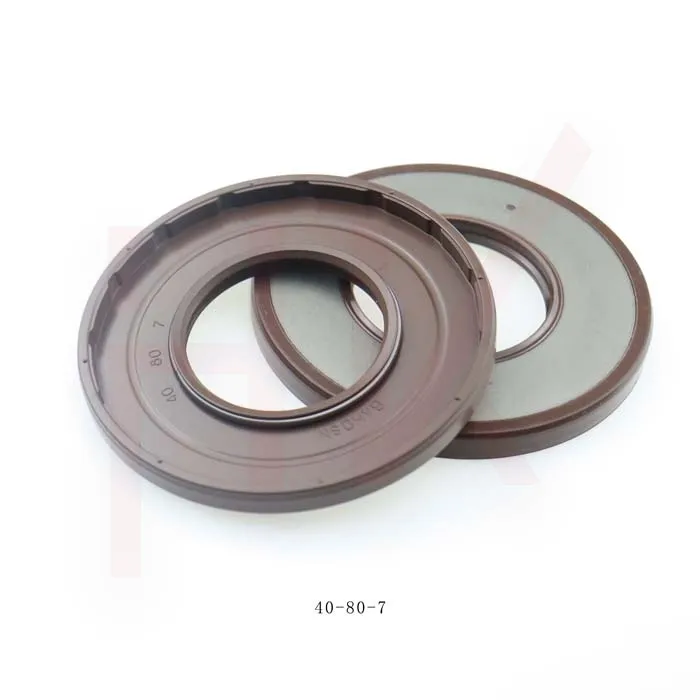Oct . 15, 2024 02:47 Back to list
Similar Oil Seal Specifications for Enhanced Performance and Compatibility
Understanding the Importance of 35 72 10 Oil Seals
In the realm of machinery and automotive manufacturing, the components that often receive less attention than they deserve are oil seals. Among them, the 35 72 10 oil seal stands out for its specific application and performance characteristics. Understanding its role, design, and importance can significantly impact the efficiency and lifespan of mechanical systems in which it is used.
What is a 35 72 10 Oil Seal?
The designation “35 72 10” refers to specific measurements and material specifications that define this oil seal. Generally, the numbers represent the internal diameter, the outer diameter, and the width of the seal, respectively. In this case, the oil seal has a 35mm inner diameter, a 72mm outer diameter, and a width of 10mm, making it suitable for a variety of applications in automotive and industrial machinery.
Oil seals, also known as grease seals or rotary shaft seals, are designed to prevent the leakage of lubricants from the machinery while simultaneously keeping dirt and contaminants out. The integrity of oil seals is crucial because loss of lubricant can lead to increased friction, wear, and ultimately, mechanical failure.
Material Composition
The effectiveness of an oil seal is highly influenced by the materials used in its construction. Most oil seals, including the 35 72 10 type, are made from rubber compounds that have superior elasticity and resistance to environmental factors such as temperature fluctuations, chemicals, and UV exposure. Common materials include Nitrile (Buna-N), Fluoroelastomer (Viton), and Silicone rubber. Each of these materials has distinct advantages depending on the specific application.
For instance, Nitrile is great for general automotive use due to its excellent resistance to petroleum-based oils and fuels. In contrast, Fluoroelastomer provides enhanced resilience for applications involving high temperatures and aggressive chemicals. It’s essential to choose the right material to ensure the longevity and effectiveness of the oil seal.
35 72 10 oil seal

Installation Considerations
Correct installation of oil seals is crucial for optimal performance. Failures often occur due to improper installation techniques, which can lead to premature wear or damage. It is essential to ensure that the sealing surface is clean and smooth before placing the seal. Additionally, care should be taken to avoid any deformation of the seal edges during installation, as this can compromise its sealing capabilities.
Tools like seal installers or sleeve protectors can greatly aid in achieving correct alignment and minimizing the risk of damage during installation. Proper torque specifications must also be adhered to when reinstalling any components that interact with the oil seal, as overtightening can lead to failures.
Benefits of Using 35 72 10 Oil Seals
The benefits of utilizing the 35 72 10 oil seal in a mechanical system are numerous. These seals help maintain the integrity of lubricants, thus reducing the overall maintenance needs and extending the life of both the machinery and its components. They also contribute to the efficiency of the system by minimizing friction, which can lead to energy savings in applications where machines operate continuously or under heavy loads.
Moreover, the durability of high-quality oil seals ensures reliable operation even in challenging operating conditions, ranging from extreme temperatures to exposure to corrosive substances. This reliability is especially critical for automotive applications, where the performance and safety of the vehicle can depend heavily on the integrity of its seals.
Conclusion
The 35 72 10 oil seal may seem like a small part of the mechanical system, but its impact is significant. Whether in vehicles or industrial equipment, the performance and longevity of machinery depend greatly on the effectiveness of its seals. Understanding the specifications, material properties, and installation techniques associated with this oil seal equips users with the knowledge necessary to maintain their systems efficiently. In the end, investing in quality oil seals and ensuring their proper installation may be one of the most effective strategies for enhancing the performance and reliability of machinery in various sectors.
-
TCN Oil Seal Metal Ring Reinforcement for Heavy Machinery
NewsJul.25,2025
-
Rotary Lip Seal Spring-Loaded Design for High-Speed Applications
NewsJul.25,2025
-
Hydraulic Cylinder Seals Polyurethane Material for High-Impact Jobs
NewsJul.25,2025
-
High Pressure Oil Seal Polyurethane Coating Wear Resistance
NewsJul.25,2025
-
Dust Proof Seal Double Lip Design for Construction Equipment
NewsJul.25,2025
-
Hub Seal Polyurethane Wear Resistance in Agricultural Vehicles
NewsJul.25,2025
-
The Trans-formative Journey of Wheel Hub Oil Seals
NewsJun.06,2025
Products categories
















